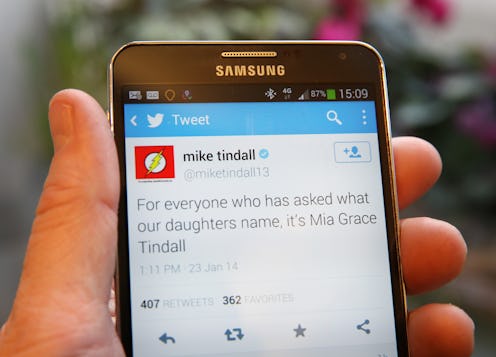News
Wait, What Just Happened To Twitter?
On Monday afternoon, millions of Twitter users were suddenly faced with a visual redesign of Twitter. The new look was designed to mimic Twitter's iOS and Android apps, with a clean white interface and a wider, more visual feel. This comes four months after Twitter began incorporating pictures into the standard Twitter feed, suggesting that the social-networking site is moving towards a heavy emphasis of images and videos, à la Facebook and Instagram.
On Jan. 13, Twitter Tweeted that this was coming: "We're now rolling out a refreshed twitter.com, reflecting the look & feel of our iOS & Android apps." One percent of Twitter's users saw the redesign three weeks ago, so that Twitter could monitor the reaction to the new look. The new design takes up more physical space on the page, and pictures and videos within Tweets are noticeably larger.
Although Twitter has a strong foothold on the social-networking market and remains one of the top ten most-visited sites around the globe, the company is following the lead of its social rivals by maximizing the size and importance of the images shared by its users.
Last August, Twitter unveiled a redesign to the way conversations were viewed on users' Twitter feeds. Monday's redesign is far more aesthetically obvious than the last one, but very little tweaking has been done to the way Twitter is actually used. It's essentially just a new face for the same site, with more emphasis on the visual.
Since Twitter is now a publicly traded company, unveiling its initial IPO last November, the company is looking for ways to endear itself to corporate sponsors — for example, with TV networks using its "Trending Topics" section.
There's another reason Twitter's website is trying to emulate its app: More than half of Twitter users (60 percent) access it through its mobile version, rather than the website itself. Like Facebook, the brunt of Twitter's success will hinge on its present and future ability to be popular on mobile — and unlike Facebook, Twitter has always been robustly popular on smartphones and tablets. It makes sense that Twitter would know a good thing when it saw it, and extend it to all other versions of Twitter.
At first, Twitter users lauded the redesign as unexpected and shocking, forgetting that Twitter had Tweeted about an upcoming redesign weeks ago.
Some people weren't happy...
... while others were pretty pleased.
And everybody else was like: Guys. Guys. Have you forgotten TweetDeck?
